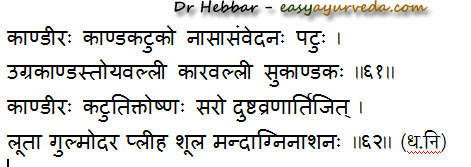Ranunculus sceleratus – Uses, Dose, Research, Side Effects
Ranunculus sceleratus is called as Kandira in Ayurveda. It is a poisonous herb, used in treating infected wounds, scabies, leucoderma etc. It is most commonly used for external applications.
Botanical names- Ranuculus sceleratus Linn.
Family- Ranunculaceae (Vatsanabha kula)
Classical categorisation: Karaveeradi Varga
Table of Contents
Vernacular names
Names in different languages:
English name – Celery-Leaved Crowfoot, Celery-leaved buttercup, Cursed crowfoot, Cursed Buttercup, Poisonous buttercup.
Other names – Apio Sardónico, Herbe de Feu, Herbe Sardonique, Mort aux Vaches, Renoncule Scélérate, Sardonia.
Hindi name- Deva kandrara , Jal Dhaniya
Arabic name- Kabikazaz
Marathi Name: khajakollathi, Kulagi
Bihari name – Palika
Kumayun – Sim
Farsi name – Karafs Dashti
Sanskrit Synonyms
Toyavalli, Kanda katuka Nasa Samvedana, Sukanda, Ugra Kanda
Habitat
It is found at altitudes up to 1700 m in Europe, Central Asia, Northern parts of India, Siberia, China, Japan and North America.
Major chemical constituents
Whole plant (except seeds) yields an essential oil containing protoanemonine( an irritant material) and serotonin. Anemonin is the active principle. (Reference: Illustrated Dravyaguna VIjnana, Vol. II, by Dr JLN Shastry)
Medicinal properties
Kandira Properties:
Guna (qualities) – Rooksha (dry), Teekshna (strong)
Rasa (taste) – Katu (pungent), Tikta (bitter)
Vipaka- Katu – undergoes pungent taste conversion after digestion
Veerya – Ushna – Hot potency
Part used- Arial part of the plant is commonly used for medicinal purposes.
Dosage: Powder 125 mg – 250 mg
As per mentioned in Bhojana kutuhalam in the context of kandira, It is said to have katu (pungent) and tiktha (bitter) taste, is hot in potency and acts as a laxative. It is helpful in pain caused due to ophthalmic disorders, wounds, spider poisoning, gulma, abdominal disorders, splenic disorders, colicky pain and stimulates digestive fire.
Sanskrit verse

Medicinal qualities
Sara – it initiates movements, useful in constipation
It is indicated in
Dushtavrana – infested wounds
Luta – insect bite
Gulma – Tumours of the abdomen
Udara – ascites, enlargement of the abdomen
Pleeha – Disease of the spleen, Splenomegaly
Shoola – abdominal pain
Mandagni – low digestion strength
Reference: Dhanvantari Nighantu
Side effects
Celery-leaved buttercup side effects:
Its external application or oral administration should be done under strict medical supervision.
External application in high quantities can cause blisters.
It is best to avoid this herb (external / oral) during pregnancy, lactation and in children.
Interaction with medicines, supplements
Can this be used while taking Homeopathic medicine?
Yes. This product does not react with homeopathic medicine.
Can this medicine be continued while taking supplements like multivitamin tablets, Omega 3 fatty acids etc?
Yes. Generally, this product goes well with most dietary supplements. However, if you are taking more than one product per day, please consult your doctor for an opinion.
With western
medicines
Seek your
doctor’s advice if you are taking this product along with other western
(allopathic / modern) medicines. Some Ayurvedic herbs can interact with modern
medicine.
If both Ayurvedic and allopathic medicines are advised together, then it is
best to take Allopathic medicine first, wait for 30 minutes and then take the
Ayurvedic medicine.
Research
Chemical composition
Pro and anti inflammatory effects
Sthanika Karma (Systemic Action)
External Application: Can cause blood vitiation, skin blisters. It is Anthelmintic in nature. It is indicated in lymphadenitis, Erectile dysfunction, Skin disorders etc.
Internal administration- It has poisonous effect on the body,
Digestive System – Carminative, digestant, Anti helminthic, and purgative in nature. Indicated in Splenomegaly, Abdominal cramp, low digestive strength, helminthiasis etc.
Reproductive system – Arthavajanana
Circulatory System – Indicated in plague as a preventive medicine.










